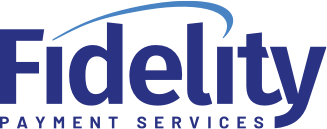Chargebacks 101
A Quick Guide for Merchants
Chargebacks are a concern for any organization that processes credit cards. The good news is that there are many things you can do to mitigate the negative outcomes of chargebacks.
In this Chargebacks 101 quick guide, we’ve given you a helpful overview of chargebacks and have shared some tips on how you can effectively manage this common pain point. We encourage you to bookmark this page for future reference!
What Are Chargebacks?
Chargebacks are customer-filed disputes on credit card transactions. There are many reasons why customers file chargebacks, but it is commonly done in the event that the transaction is fraudulent or unauthorized, or when there is an issue regarding the product or service (e.g., it was damaged or not received).
Common Types of Chargebacks:
Fraudulent TransactionsChargebacks in this category are filed when the cardholder’s card information was compromised and used by a fraudster to make a purchase.
Authorization IssuesThese chargebacks occur when the authorization on the transaction was not properly obtained.
Processing ErrorsThis category consists of chargebacks that are a result of incorrect processing behaviors — such as wrong transaction amounts or duplicate transactions.
Consumer DisputesConsumer disputes are initiated by the customer when there is an issue with the quality or delivery of the product or service. It’s important to note that while consumer disputes are often made in good faith, there is a troubling phenomenon known as ‘friendly fraud,’ in which customers file disputes simply to get their money back.
What Happens When a Chargeback is Filed?
Once a chargeback is filed, the cardholder’s bank (issuing bank) places a hold on the transaction amount. The customer is not obligated to pay the amount until and unless the chargeback is resolved in the merchant’s favor.
The issuing bank then notifies the merchant’s bank (acquiring bank) of the chargeback, and in turn,the acquiring bank notifies the merchant. The merchant has a limited amount of time to respond to the chargeback in accordance with card issuer regulations. When responding to a chargeback, the merchant needs to provide documentation that counters the claims made.
Why Are Chargebacks a Problem For Businesses?
There are several reasons why chargebacks are costly for merchants, the most obvious being that every chargeback a merchant loses is essentially a lost sale. On top of that, each chargeback can incur fees.
Besides the financial costs, chargebacks are a threat to merchant processing accounts — and this is true regardless of whether the merchant wins or loses the chargeback. If a merchant receives too many chargebacks, the card brand may force the merchant’s processing bank to close the account.
How Can I Reduce the Risk of Chargebacks?
Although chargebacks cannot be entirely prevented so long as your business accepts credit cards, there are things that merchants can do to come out ahead. Here are some tips to help you prevent and better manage each type of chargeback:
- Card-Present:
- If you’re suspicious of a sale, you can contact your acquiring bank’s authorization center to make a code 10 authorization request.
- Ensure that cards are dipped (in an EMV reader) or tapped (on a contactless reader), rather than swiped.
- Card-Not-Present:
- Be familiar with the warning signs of online fraud, and utilize address verification service (AVS) and card verification value (CVV) checks. AVS verifies that the provided billing address matches the billing address on file with the bank, as mismatched billing addresses are a big red flag for fraud.
- There are various online fraud screening tools available that add an extra layer of protection. Reach out to the Fidelity team to learn more.
- If a card is declined, do not continue to attempt to process it.
- Always submit authorization requests before processing transactions.
- Be sure to batch out your authorized transactions on time. Once you’ve authorized a transaction, it should be captured within 7 days. If you do not capture the transaction within this time frame, you should process a new authorization.
- Avoid data entry errors. Be vigilant that you are entering the correct data and transaction amount. The transaction amount should match the receipt.
- If the transaction amount has changed since authorization, be sure to communicate this to the customer before capturing the charge.
- Provide transaction receipts to customers.
- Maintain organized transaction and shipping records.
- Ensure that your customer service team is easily accessible and well-qualified to respond to customer complaints promptly and efficiently.
- Provide clear terms and conditions and refund/return policies. Whenever possible, have the customer sign your policies.
To learn more about chargebacks, see our Protect Your Business From Chargebacks.
Have Questions?
Fidelity is here to help! Contact our Customer Service team if you have any chargeback-related questions or concerns.
